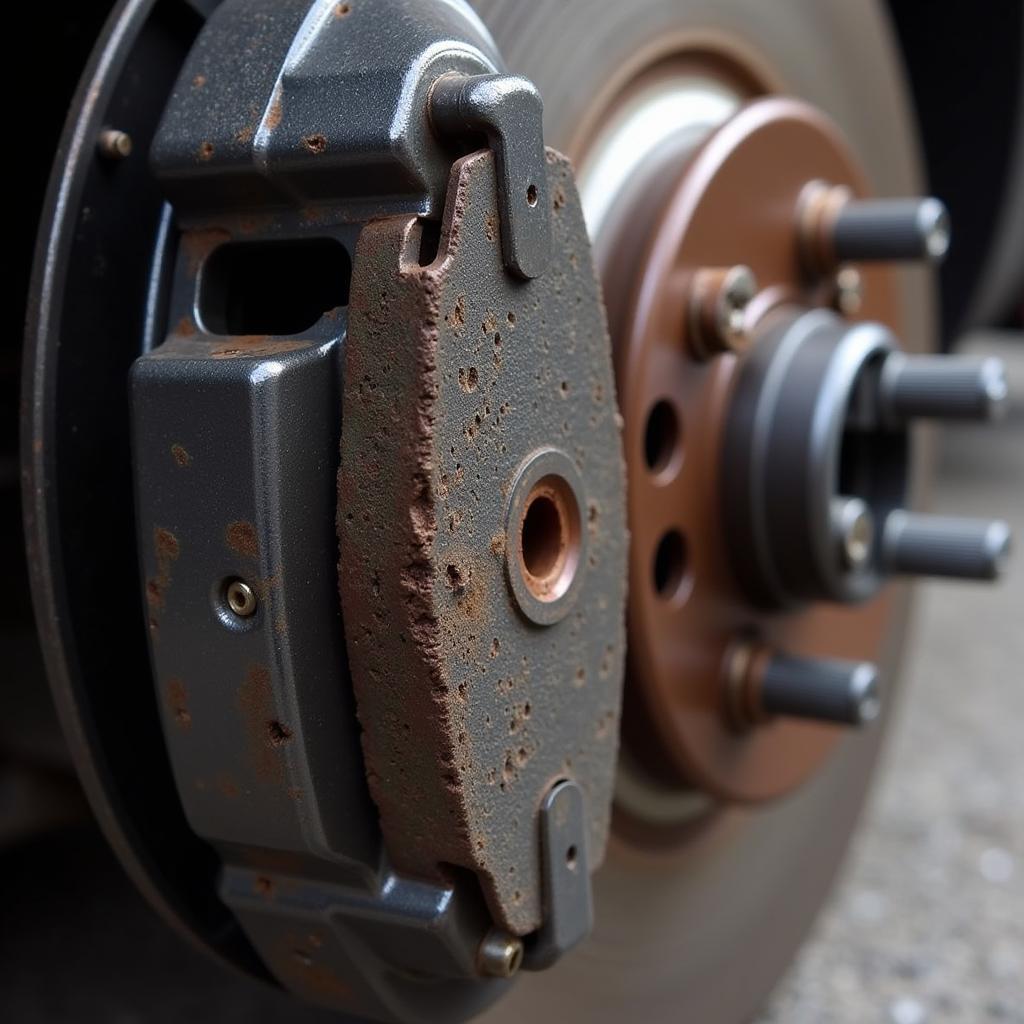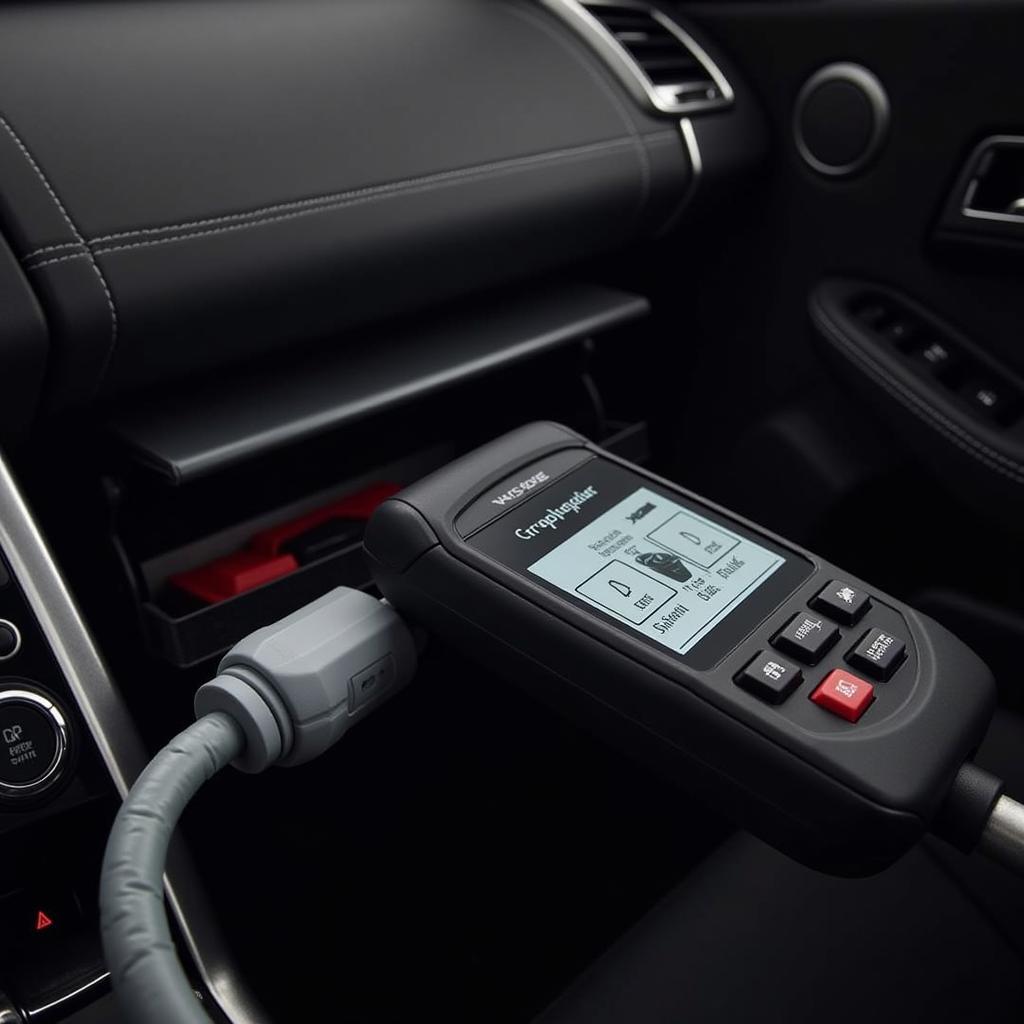The dreaded brake pad warning light glowing on your Range Rover Sport dashboard – it’s a sight no driver wants to see. This light is your car’s way of telling you it’s time to pay attention to a critical safety component: your brakes. But what exactly does it mean, and more importantly, what should you do next?
Why is My Range Rover Sport Brake Pad Warning Light On?
This warning light is directly connected to your brake pad wear sensors. These sensors are tiny metal tabs embedded within your brake pads. When the brake pad material wears down to a certain point, the sensor makes contact with the brake rotor, completing a circuit and triggering the warning light on your dashboard.
Here’s a breakdown of the most common reasons for the brake pad warning light:
- Worn Brake Pads: This is the most likely culprit. Brake pads are consumable items that wear down over time due to friction.
- Faulty Brake Pad Sensor: While less common, it’s possible for the sensor itself to malfunction. This could be due to damage, corrosion, or even a loose connection.
- Issues with the Brake Fluid System: Low brake fluid can sometimes trigger the warning light. It’s crucial to check your brake fluid level if the light comes on.
- Electrical Problems: Occasionally, an electrical issue within the warning light system itself can cause the light to illuminate even if there’s nothing wrong with your brakes.
 Range Rover Sport Brake Pad Wear
Range Rover Sport Brake Pad Wear
Is It Safe to Drive with the Brake Pad Warning Light On?
The short answer is: it depends. If the light just came on recently, you might have a small window to drive cautiously to a mechanic. However, driving with worn brake pads for an extended period is extremely dangerous. Here’s why:
- Reduced Braking Efficiency: Worn brake pads significantly reduce your stopping power, increasing the distance it takes to come to a complete stop.
- Damage to Brake Rotors: Continuing to drive with worn pads will eventually cause damage to your brake rotors, leading to costly repairs.
- Complete Brake Failure: In extreme cases, ignoring the warning light for too long can lead to complete brake failure, putting you and others at serious risk.
How to Address the Brake Pad Warning Light
- Inspect Your Brake Pads: If you’re comfortable doing so, you can visually inspect your brake pads yourself. Look through the spaces between the wheel spokes to get a view of the pads. If they appear thin (less than ¼ inch of friction material), it’s time for a replacement.
- Check Your Brake Fluid: Locate the brake fluid reservoir under the hood (refer to your owner’s manual) and check the fluid level. If it’s low, there might be a leak in your brake system, requiring immediate attention from a mechanic.
- Don’t Delay Professional Inspection: Even if you’re unsure about the cause of the warning light, it’s crucial to have your Range Rover Sport inspected by a qualified mechanic as soon as possible. They can diagnose the issue accurately and recommend the necessary repairs.
Can I Reset the Brake Pad Warning Light Myself?
It is technically possible to reset the brake pad warning light yourself on some Range Rover Sport models. However, we strongly advise against this unless you are familiar with automotive electrical systems and have the proper diagnostic tools. Incorrectly resetting the light or clearing the fault codes without addressing the underlying issue can be dangerous.
For detailed instructions on how to reset the warning light, refer to the resources available at range rover sport brake pad warning light reset. Keep in mind that these instructions may vary depending on the model year and trim level of your Range Rover Sport.
 Range Rover Sport Diagnostic Tool
Range Rover Sport Diagnostic Tool
Preventing Future Brake Pad Warning Light Issues
Here are a few proactive steps you can take to help prevent premature brake pad wear and avoid seeing that warning light again:
- Smooth Braking: Avoid harsh braking whenever possible. Gradual braking puts less stress on your brake pads and helps them last longer.
- Lighten Your Load: Carrying excessive weight puts extra strain on your braking system. Travel light whenever you can.
- Regular Brake Inspections: Have your brakes inspected by a qualified mechanic at least once a year, or more frequently if you drive in demanding conditions like heavy traffic or hilly terrain.
Conclusion
The brake pad warning light on your Range Rover Sport is a critical safety feature that should never be ignored. Addressing the issue promptly will not only save you money on costly repairs down the line but, most importantly, will keep you and other drivers safe on the road.
If you have any doubts about your brakes or the warning light, don’t hesitate to consult a qualified mechanic specializing in Range Rover vehicles. They can ensure your braking system is in top condition for safe and worry-free driving. For further information and resources regarding the brake pad warning light on your Range Rover Sport, you can refer to range rover sport brake pad warning light and 2008 range rover sport supercharged red brake light warning.

